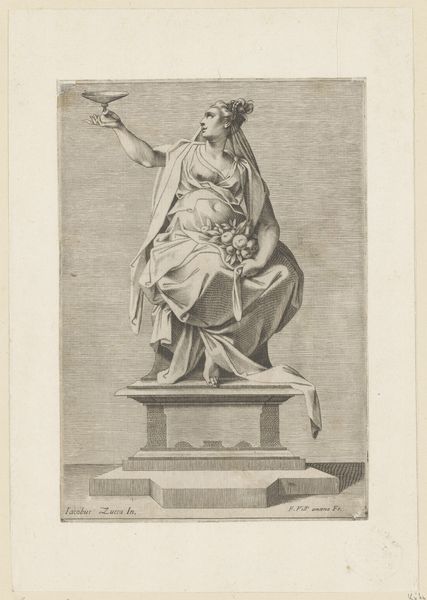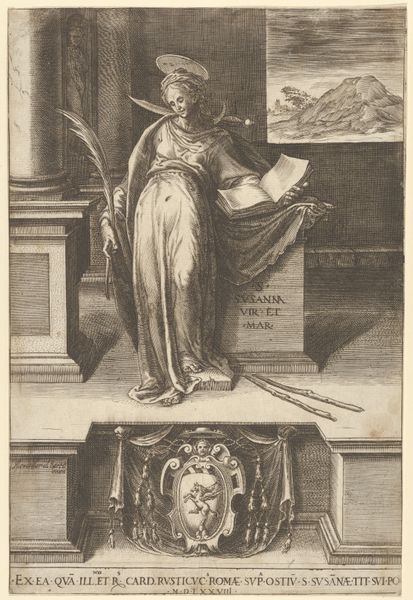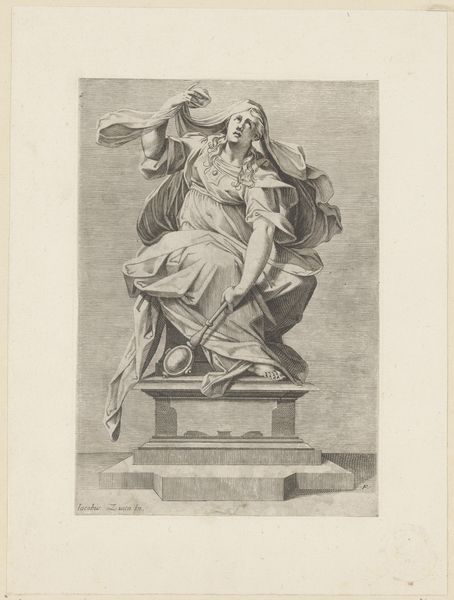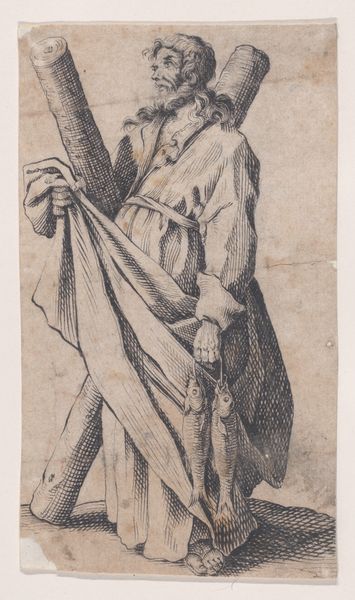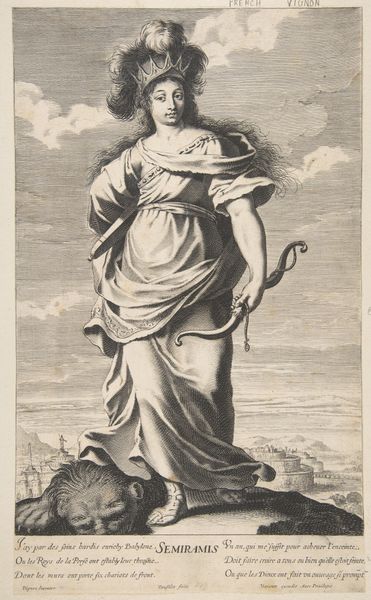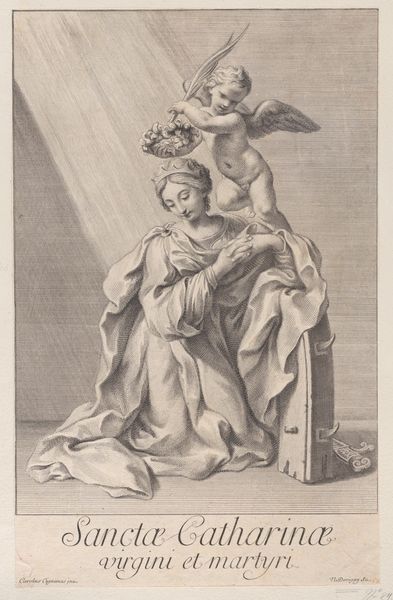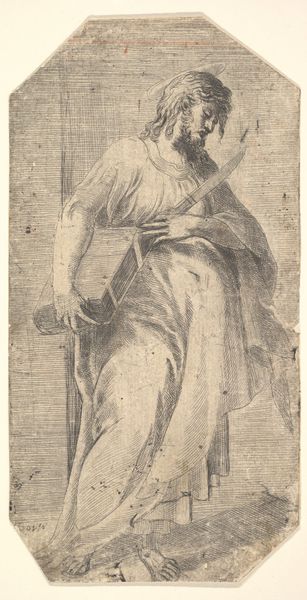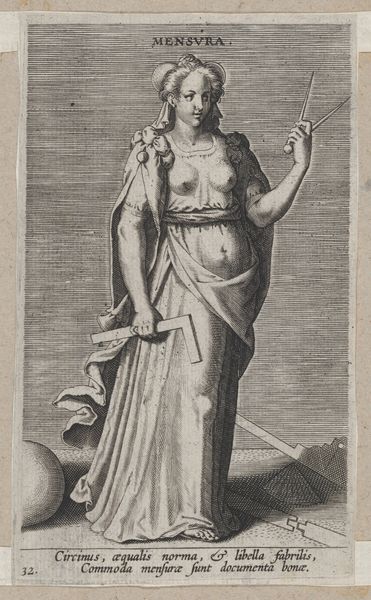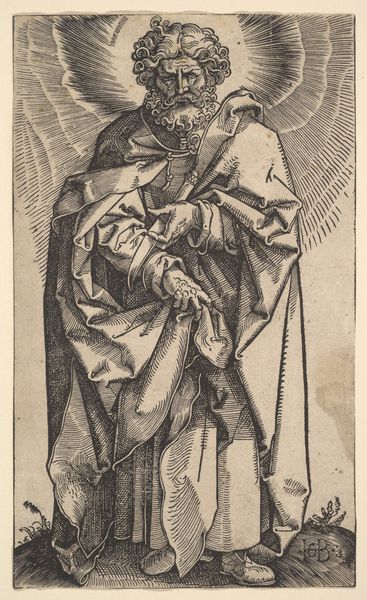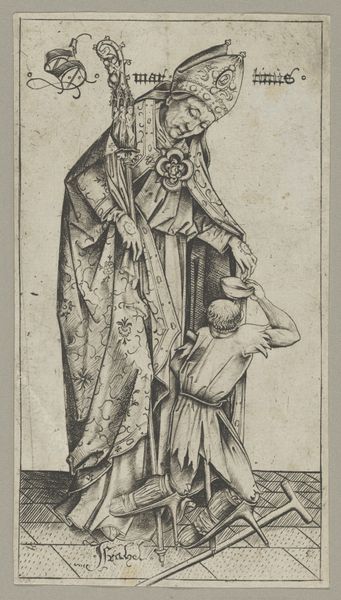
drawing, print, engraving
#
drawing
#
allegory
#
baroque
# print
#
figuration
#
history-painting
#
engraving
Dimensions: Sheet (Trimmed): 8 1/8 × 5 9/16 in. (20.6 × 14.2 cm)
Copyright: Public Domain
Curator: Before us we have "Aetarnitas," an engraving dating from 1614 to 1650, made by Marcus Sadeler. It's currently held at the Metropolitan Museum of Art. Editor: It's stark, isn't it? The figure almost seems to emerge from the hatched lines, with the composition emphasizing a strong verticality. Curator: Yes, but let's consider its context. Sadeler, working during the late Renaissance and early Baroque periods, was deeply influenced by the political and religious turmoil of the era. "Aetarnitas," or Eternity, is an allegory, a common theme at a time preoccupied with mortality and legacy. Editor: Indeed. The allegorical aspect, however, doesn't detract from the way Sadeler manipulates light and shadow to create depth. See how the drapery folds cascade? The use of line to define form is really quite remarkable. Curator: Precisely. This is more than just technical skill; it's a commentary on power and perception. Note how the figure of Eternity places a foot firmly on a globe. What statements is Sadeler making about whose narratives endure? And whose are marginalized or forgotten? The piece prompts crucial questions of access. Editor: I hadn't considered the gesture with that political valence, I will grant you. For me, it emphasized a kind of dominance within the formal framework of the engraving. A subtle detail I find so impactful is how the halo sits—almost carelessly—on the subject's head. Curator: Right, it is easy to interpret Baroque art on face value without digging deeper. It encourages us to examine who gets to write history and how these symbols are manipulated across time to solidify certain world views. Editor: In conclusion, while I was immediately struck by Sadeler’s skillful formal arrangement of line and shadow, this piece proves that the aesthetic impact works best as a mirror of deeper, societal interrogations. Curator: It reveals how technique and political ideology could intersect to either critique or consolidate narratives that favor certain individuals and groups at the expense of others.
Comments
No comments
Be the first to comment and join the conversation on the ultimate creative platform.
